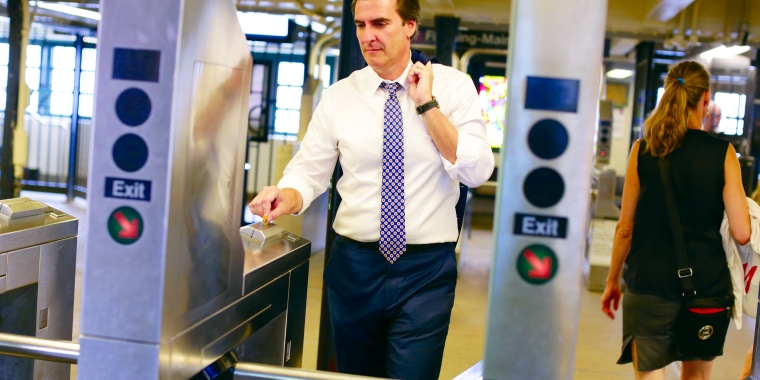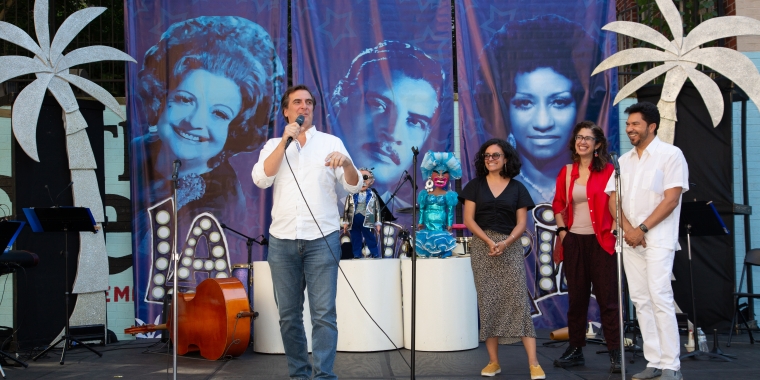
New York Daily News: Cuomo pushes $145M raid on funds dedicated to cash-strapped MTA

Call Gov. Cuomo the “Sundance Kid” — because like the famed turn-of-the-20th century robber, he’s fixing to raid barrels of cash from the railroads.
The governor’s proposed state budget would move $160 million dedicated for subways, trains and other elements of New York’s mass transit systems into the state’s general fund. That includes $145 million meant for the cash-strapped Metropolitan Transportation Authority.
The bulk of Cuomo’s cash shuffle would come from the state’s Metropolitan Mass Transportation Operating Assistance fund, a collection of tax revenues designed to help fund the MTA’s $17 billion annual operating budget.
The raid would also take $6.5 million from internet sales tax funds, which were approved in 2019 to pay for MTA construction costs.
The changes were buried in Cuomo’s executive budget proposal released last month, but were uncovered by watchdogs and lawmakers in recent weeks.
While state statutes reserve operating assistance money for the MTA, Cuomo has time and again tapped into it to pay for other state needs. Between 2011 and 2015, he approved budgets that drained $391 million of the funds.
“Dedicated should mean dedicated, not fought over every year and swept for other purposes,” said Sen. Michael Gianaris (D-Queens). “This is a raid of MTA funds at a time when the MTA is in desperate need.”
Cuomo’s budget isn’t final. State lawmakers are to hammer out a final deal before the start of the state’s fiscal year April 1.
Gianaris said that because Democrats now hold veto-proof majorities in the Assembly and Senate, the Legislature has enough muscle to fight Cuomo’s transit raids — and prevent the governor from doing the same in the future.
The $145 million that Cuomo wants to steer from the MTA is almost exactly the $148 million the agency expected to gain in 2021 from a planned fare hike. Approval of the fare hike was scheduled for last month, but was delayed until summer.
The move comes as the MTA faces a steep financial hole caused by the COVID-19 crisis.
Transit ridership has dropped by more than 70%, eviscerating fare and toll revenues that before the pandemic covered half of the MTA’s operating budget.
The MTA received $8 billion in relief from Congress last year — and officials said they’ll need another $8 billion to offset the hit from the pandemic.
Cuomo’s raids add to the MTA’s financial pain — and they appear to have been orchestrated in advance, said Rachael Fauss, an analyst at the good government group Reinvent Albany. The annual budget approved by the MTA board in December assumed the $145 million would be shifted to the state budget, Fauss noted.
“It’s breaking trust with the public when dedicated funds aren’t actually dedicated,” said Fauss.
Cuomo’s budget relies upon New York receiving at best $15 billion in aid. But the governor also presented a “worst-case scenario” in which the Empire State only gets $6 billion in funds from Washington.
While Cuomo has repeatedly said the state is facing COVID-incurred losses totaling $15 billion, his budget office recalculated the shortfall to be closer to $8 billion.
New York State Budget Division spokesman Freeman Klopott said cuts would be made in all state agencies if Congress doesn’t come through with the $15 billion.
“If the state receives the $15 billion in requested federal funding, many of these reductions can go away, and we are working to minimize impact as much as possible for both riders and transit employees,” said Klopott, who also noted that $145 million is a small fraction of the MTA’s annual operating budget.Transport Workers Union international president John Samuelsen said the raids would be a hit to both transit riders and employees.
“We could fix or remove every single derailment-causing defect in the subway system over the next five to 10 years for $145 million,” said Samuelsen. “You could add thousands of bus runs with that money. Imagine what that would do for the working neighborhoods of New York City.”
Read the full article at the New York Daily News here.



